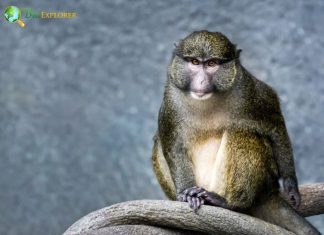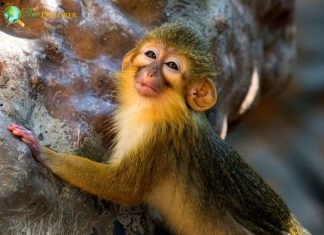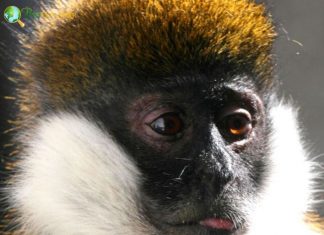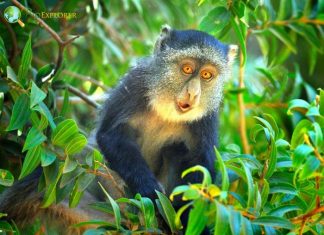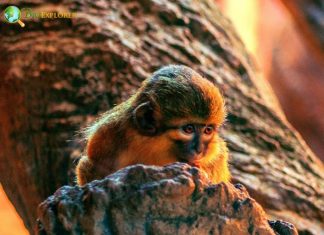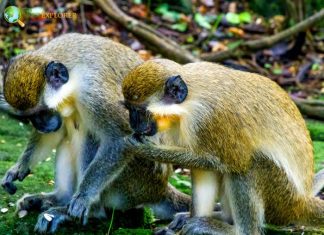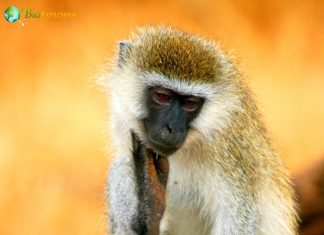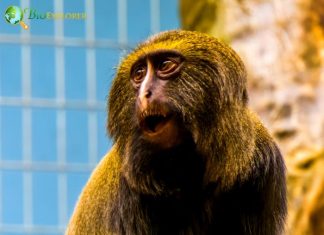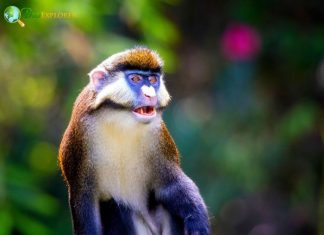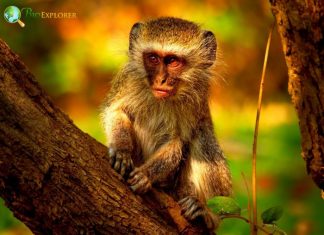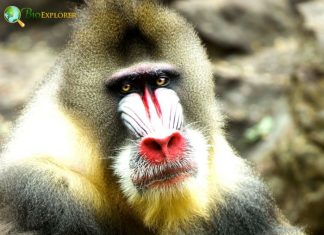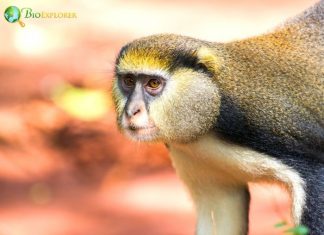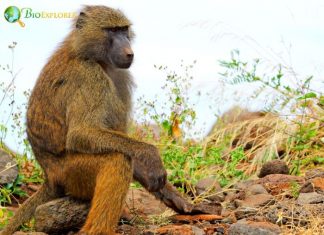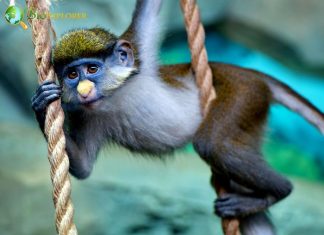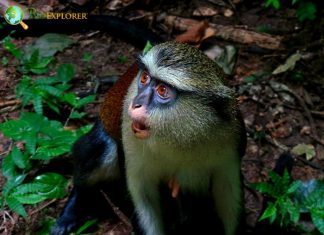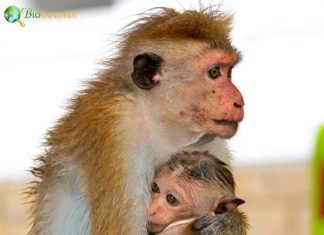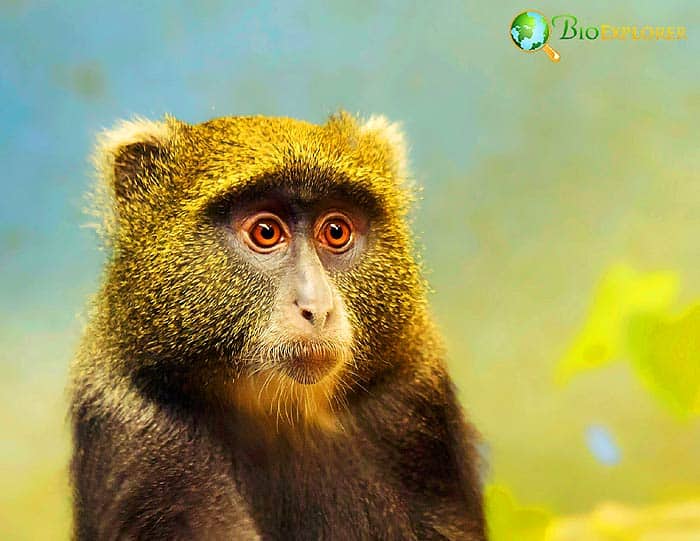
Green monkeys, scientifically known as Chlorocebus sabaeus, is a type of Old World monkey found primarily in West Africa, from Senegal to the Volta River. They are a medium-sized primate species, typically weighing between 4 to 8 kilograms, with males usually being larger than females. Green monkeys live in various habitats, including savannas, woodland areas, and forests near bodies of water. They are highly social animals, often forming groups of up to 50 individuals.
The term “green” in their name can be misleading as these monkeys are not exactly green in color. Their fur combines grey and yellow, but blending these hues often gives off a greenish or olive appearance in certain lights. The vibrant hue can also be influenced by the angle of the light and the structure of the monkey’s fur, which can scatter light to emphasize the green effect.
Green Monkeys
Although the green monkey is a prominent example, other monkey species exhibit varying degrees of greenish or olive tint in their coats. Notably, these species belong to the same genus, Chlorocebus, which consists of vervet monkeys. Among them, the following species display a greenish or olive color in their fur:
- Chlorocebus pygerythrus, also known as the vervet monkey, is typically found in East Africa.
- Chlorocebus aethiops, the grivet, which is native to the savannas of East Africa.
- Chlorocebus tantalus, the tantalus monkey, inhabits areas in Central Africa.
- Chlorocebus djamdjamensis, the Bale Mountains vervet, is an endemic monkey species in the Bale Mountains of Ethiopia.
- Chlorocebus cynosuros – Known as the Malbrouck, native to Angola, Zambia, and Mozambique.
- Chlorocebus rufoviridis – The red-tailed monkey, often known as the black-cheeked white-nosed monkey, red-tailed guenon, redtail monkey, or Schmidt’s guenon.
Outside the Chlorocebus genus, other primate species also sometimes exhibit greenish hues in certain light conditions, largely due to the interaction of light with their fur. Some examples include:
- Alouatta palliata – Known as the mantled howler, a species of howler monkey that has fur which can sometimes look greenish because of yellow and black strands mixed together.
- Cercopithecus mitis – The blue monkey or diademed monkey is not blue but gets its name from the blueish hue that can be created from the interplay of light on its dark fur, which can sometimes appear olive or green in certain light conditions.
- Trachypithecus obscurus – Also known as the dusky leaf monkey, spectacled langur, or spectacled leaf monkey. It has greyish fur that can have a greenish tint in certain lighting.
Remember, these subtle green or olive hues are often a result of the interaction between light and the structure and color of the monkey’s fur, rather than the fur being green in color in the same way that grass or leaves are.
Allen’s Swamp Monkey
Species Name: Allenopithecus nigroviridisSkin Color(s): Brown, gray and green
Angolan Talapoin
Species Name: Miopithecus talapoinSkin Color(s): Greenish-gray, greenish-yellow, and grayish-white
Bale Monkey
Species Name: Chlorocebus djamdjamensisSkin Color(s): Dark brown
Blue Monkey
Species Name: Cercopithecus mitisSkin Color(s): Olive or gray
Gabon Talapoin
Species Name: Miopithecus ogouensisSkin Color(s): Greenish-gray
Green Monkey
Species Name: Chlorocebus sabaeusSkin Color(s): Golden-green
Grivet Monkey
Species Name: Chlorocebus aethiopsSkin Color(s): Olive
Hamlyn’s Monkey
Species Name: Cercopithecus hamlyniSkin Color(s): Olive gray and black
Lesser Spotted-Nosed Monkey
Species Name: Cercopithecus petauristaSkin Color(s): Olive green
Malbrouck
Species Name: Chlorocebus cynosurosSkin Color(s): Olive-gray
Mandrill
Species Name: Mandrillus sphinxSkin Color(s): Olive green
Mona Monkey
Species Name: Cercopithecus monaSkin Color(s): Red-brown to brown-agouti
Olive Baboon
Species Name: Papio anubisSkin Color(s): Olive
Schmidt’s Red-tailed Monkey
Species Name: Cercopithecus ascaniusSkin Color(s): Black, red, or orange
Tantalus Monkey
Species Name: Chlorocebus tantalusSkin Color(s): Yellowish brown
Toque Macaque
Species Name: Macaca sinicaSkin Color(s): Golden or orange-brown to yellowish or Olive
These monkeys and their similar colorations are an adaptation to their respective environments, providing camouflage against predators. They exhibit great diversity and are important study subjects in fields like social behavior, ecology, and evolutionary biology.
Black Monkeys | White Monkeys | Brown Monkeys | Red Monkeys | Orange Monkeys | Gray Monkeys | Yellow Monkeys


